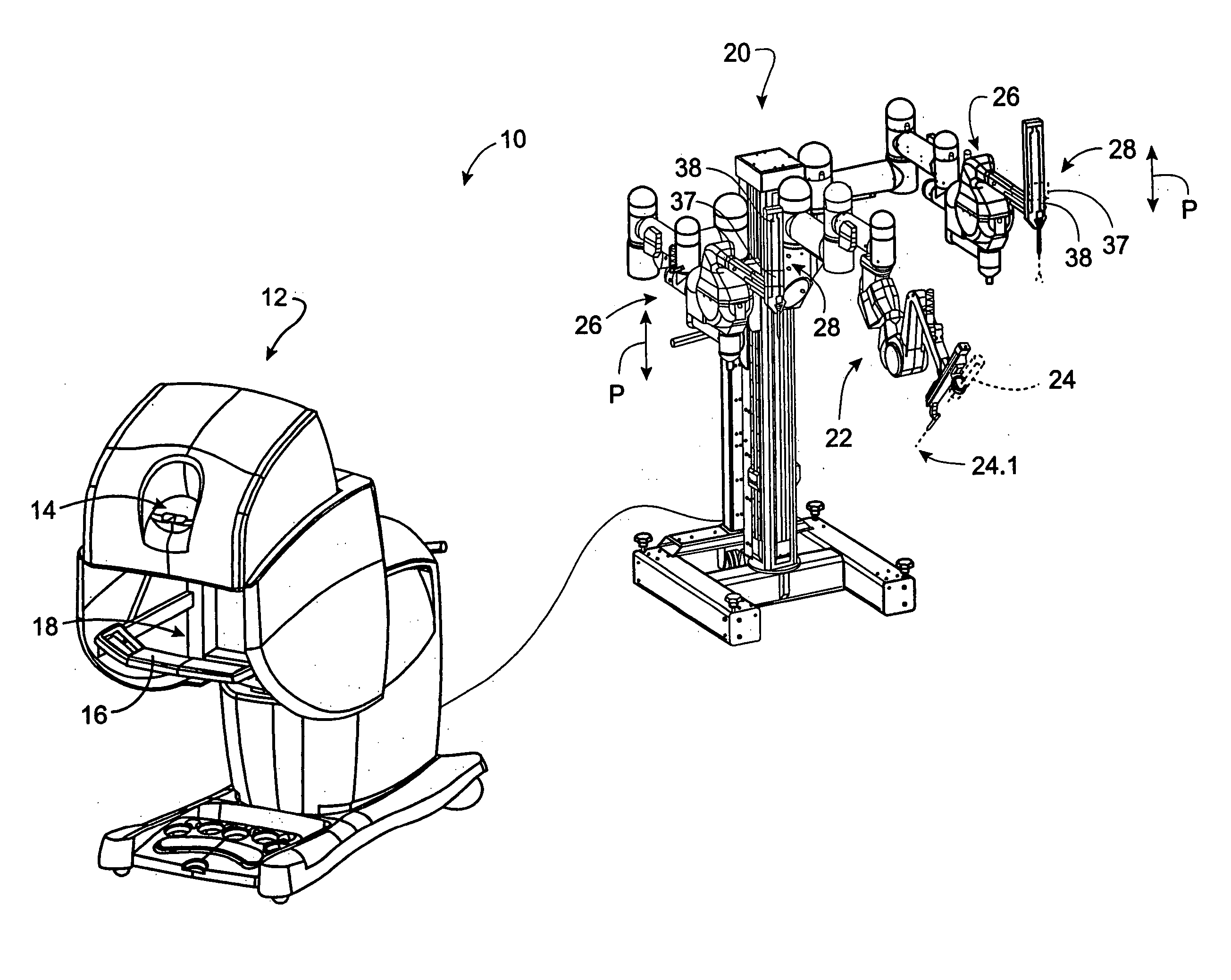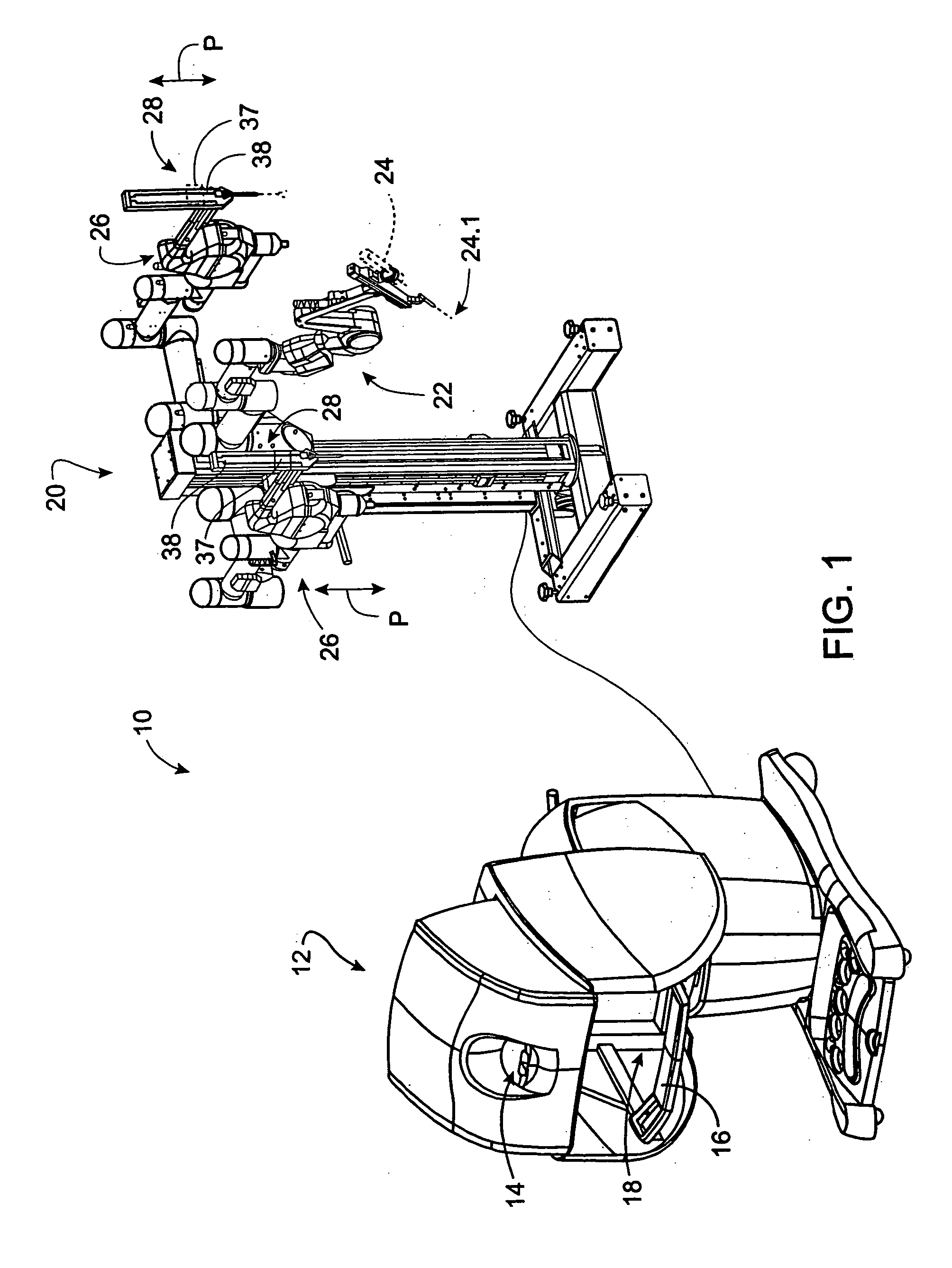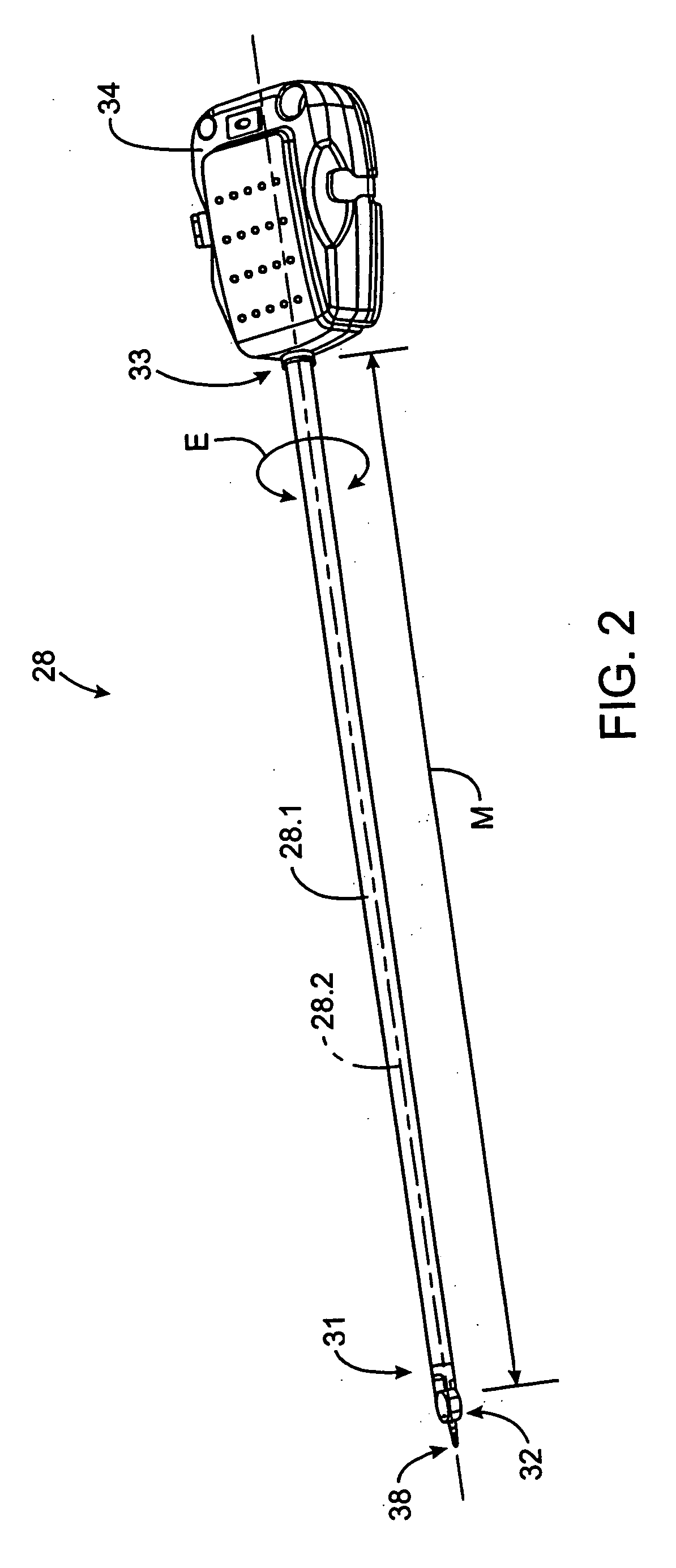Robotic surgical tool with ultrasound cauterizing and cutting instrument
a robotic surgical and ultrasound technology, applied in the field of surgical instruments, can solve the problems of traditional minimally invasive surgical instruments, deny the surgeon the flexibility of tool placement in open surgery, and minimally invasive techniques, so as to improve the efficiency of robotic surgery, facilitate the positioning of the probe tip, and reduce the risk of surgical complications.
- Summary
- Abstract
- Description
- Claims
- Application Information
AI Technical Summary
Benefits of technology
Problems solved by technology
Method used
Image
Examples
embodiment 300
[0123]FIGS. 20 through 23 illustrate an alternative example of an instrument embodiment 300 including aspects of the invention.
embodiment 80
[0124] It should be noted that much of the description above with respect to the robotic instrument embodiment 80 of FIGS. 10-19, including incorporated references, is also relevant with respect to instrument 300, since in many cases generally similar structures of each instrument serve equivalent functions.
[0125] For convenience and to minimize manufacturing costs, selected OEM components of commercially available instruments may optionally be included in the instrument 300 described herein. FIGS. 24-27 are sheets of reproductions of the FIGS. 26-36 of U.S. Pat. No. 6,280,407, issued Aug. 28, 2001 to Manna, et al., entitled “Ultrasonic Dissection And Coagulation System”, and assigned to United States Surgical Corporation of Norwalk, Conn., the entire contents of which are hereby incorporated by reference. The patent describes, among other things, a hand-held ultrasonic treatment instrument example generally similar to the AutoSonix* Ultra Shears* made by United States Surgical Corp...
PUM
 Login to View More
Login to View More Abstract
Description
Claims
Application Information
 Login to View More
Login to View More - R&D
- Intellectual Property
- Life Sciences
- Materials
- Tech Scout
- Unparalleled Data Quality
- Higher Quality Content
- 60% Fewer Hallucinations
Browse by: Latest US Patents, China's latest patents, Technical Efficacy Thesaurus, Application Domain, Technology Topic, Popular Technical Reports.
© 2025 PatSnap. All rights reserved.Legal|Privacy policy|Modern Slavery Act Transparency Statement|Sitemap|About US| Contact US: help@patsnap.com



